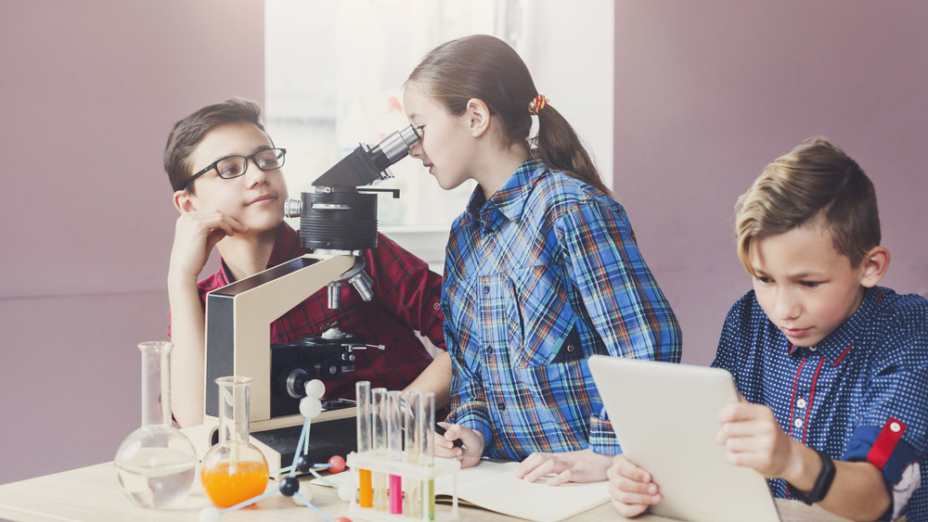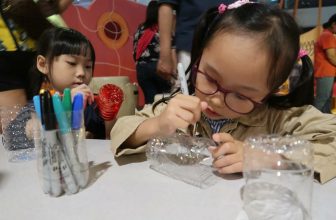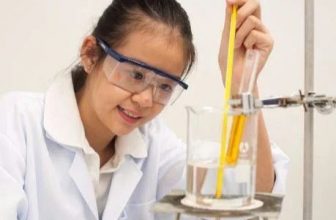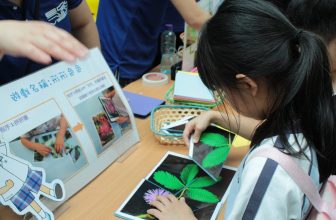
The Origin of STEM+ Educational Research and the Correction of Curriculum Deviation
The author has been exploring the theme of STEM education for two years. The origin is to focus on how to enhance the effectiveness of creative education and cultural and artistic elements. When it is discovered that there are some deviations and deficiencies in the promotion of the Mainland and Hong Kong; schools and teachers are generally confused and anxious, especially in pre-school education, so we should extend our thinking on this innovative education in school-based curriculum planning, multiple teaching design and teacher training. . The main advocate is to use low-cost, low-tech configuration, cross-disciplinary integration, to integrate conventional classroom learning models, rather than to popularize and promote in the form of superimposing existing extracurricular or in-class. At the same time, it is suggested that pre-school education can consciously highlight the STEAM elements in the six content categories and five learning objectives covered by the curriculum guide, in line with thematic teaching strategies, and focus on life, scientific inquiry, knowledge application, creative imagination, collaborative learning, and multiple expressions. STEM+ school-based education planning.
In the United States, the birthplace of STEM education, many documents and comments from other scholars have shown that this is not only an innovative education reform, but also a strategic policy for a new generation of power. However, the curriculum model, learning content, ability literacy, and teaching strategies are actually included in the education planning of the millennium curriculum reform in most developed countries and regions, and Hong Kong is no exception. Therefore, until 2015, the education circles in Hong Kong and the Mainland were relatively unfamiliar and indifferent to STEM education. The United States launched STEM education, which aims to enable students to participate in activity-based, project-based and problem-solving-based learning, and to provide a hands-on classroom experience. It has become a training tool for students to face 2030 and 2050 future education. The main learning strategy.
The author pointed out in the special manuscript that Hong Kong originally relied on the 15-year development advantages of the millennium education reform and curriculum reform, and it would not be difficult to promote cross-disciplinary comprehensive learning in primary and secondary schools and encourage problem-inquiry STEM education. However, in the past five years, the development ecology of Hong Kong schools has deteriorated. Schools and teachers are a little bit “not doing their jobs properly”, and the motivation for innovation has not continued to adapt. In addition, it is affected by the hardware-led STEM courses of many off-campus educational institutions and the deviation of educational product suppliers. The marketing method of STEM is misleading and lacks self-confidence due to the cognitive barriers to the nature of STEM education. Therefore, the author used to share STEM+ education development in middle, small, and young children. The main task was to clarify the correspondence between STEM education and the key items of curriculum reform, and to recall teachers’ perception of the original application of multiple curriculum models and teaching strategies, and to enhance the confidence of school-based development. . Some scholars also agree that the promotion of STEM+ education can re-mobilize the enthusiasm of the academic circle in teaching innovation. The research report “Promoting STEM+ Education-Localization and Top-Level Design of STEM Education” published by the Hong Kong Policy Research Institute suggests that large, medium and small children should have STEM+ phased teaching strategies to avoid swarms of technology; it is recommended to establish a STEM+ literacy framework, Let the school plan the construction of subject knowledge integration and the phased development indicators of comprehensive learning ability.
In fact, mainland China and Hong Kong also carried out educational reforms simultaneously in the 1990s, and the development outline was basically similar. However, due to differences in systems and national conditions, the results of innovation are not significant, especially the planning of teacher education has failed to keep up with the requirements of the curriculum reform, so the development of STEM+ education in the Mainland is a bit difficult. However, in the past ten years, the Mainland has widely promoted “Maker Education” in most provinces and cities in line with the national policy of educational innovation and mass entrepreneurship. The positive side is that the society has a basic understanding of popular science education, and the integration of different innovative technologies is also conducive to the learning of the core subject content of STEM education; The evaluation of the curriculum model is not good for the promotion of cross-disciplinary comprehensive learning and the construction of core literacy, and it is not closely linked to the development of mainstream education in the world. Some scholars pointed out that in the face of the industrial 4.0 social and economic environment, artificial intelligence, and the future scenarios of the Internet of Everything, China’s education plan must chase behind, and various educational innovations will be launched in 2015. Therefore, it is necessary to promote STEM+ education and force schools and teachers. Correspondingly, try to achieve the learning and teaching goals of the second curriculum reform.
I personally mentioned that STEM is not a subject for the time being, and there are no general courses and textbooks, mainly based on school-based or district-based planning. The correct way to open STEM+ education should include cross-disciplinary comprehensive learning curriculum design, promoting critical thinking, enhancing creative performance, using thematic learning strategies, encouraging participation, independent learning, mastering innovation and science tools and equipment, cultivating scientific and prudential thinking, and emphasizing humanities. Caring, researching on life and social improvement topics, and diversified learning extensions. The “A” added later in STEM education belongs to the category of literary creativity. It is not an appendage of STEM education. It is an indispensable element of STEAM. It will exist in various related learning areas (KLA), or it can be a kind of comprehensive learning in the process of inquiry. Performance. Therefore, STEM+ allows schools to design and extend creative themes and content according to their own needs more than STEAM. In the promotion and evaluation of creative education in primary and secondary schools, specific goals and learning observations must also be set to discover different levels of “micro creativity” and “micro innovation”, that is, a person’s high-level learning performance for generating new ideas and new things, or The ability to creatively solve problems can effectively promote students’ creative performance.
Technology and hardware-led adjustments
I compared the STEM textbooks, courses, programs and activities in the Mainland and Hong Kong, and found that due to historical development and product market incentives, for example, there was a relatively long-term and active “Maker Education” in the Mainland, as well as many product agents in the two places Business-led popular science education, most of the current courses and learning activities with the theme of STEM education are still mainly based on technology and hardware elements, and even become the main learning component. However, because of the need to expand the school market (the so-called B2B), textbooks are gradually being designed towards interdisciplinary elements, comprehensive learning models, and the construction of core literacy. Many theme parks, large technology companies, and industrial and commercial organizations have been developing multiple comprehensive learning courses in the past six months.
The author does not resist technology and hardware learning. I also understand that different schools have their own development needs. Some schools and parents really want to use innovative technology as a strategy for school development or as a motivation to enhance students’ self-confidence in learning. At the same time, hardware and technology can also support some gifted students to solve technical problems encountered in the process of inquiry. However, from the perspective of school-based STEM+ curriculum development and the attitude of hardware and technology, I personally think that “only learn not” or “learn before use” should be avoided as much as possible; “learn while using” or “use as you go” can be adopted. “Even “multi-use and multi-learning” can enable teachers of various subjects to learn and apply effectively to integrate into the regular curriculum of the subject and carry out a wider cross-disciplinary integration.
“H2+”──STEM curriculum integration planning model
Faced with the “market conditions” that generally love technology and hardware learning, and want to guide the construction of interdisciplinary financing courses, I summed up a coordinated curriculum integration planning model, temporarily named “H2+”. That is, various innovative technologies (high-tech), such as programming, artificial intelligence, 5G, Internet of Things, laser cutting, VR, AR, MR, etc., can still be combined with corresponding hardware (hardware), such as micro-bit, robots, The control and application of 3D printing, drones, and remote-controlled vehicles began to learn, that is, H x H (H2). However, curriculum planning should include designing extensions of different subject syllabuses, conducting cross-disciplinary comprehensive learning courses, and constructing a complete STEM+ school-based curriculum framework, which has become the “H2+” model advocated by individual cases. For details, please refer to the author’s “STEM+ Education Preliminary Exploration” column, Part 19, the case of “D+ Curriculum Framework” for drone education. If you move to robot education, you can design “R+”; 3D printing education can design “3D+”; remote control car education can design “C+”; electronic toy education can design “T+”, etc. The popular Maker Education in the Mainland can also be adjusted to “M+” (Maker STEM) curriculum planning.
A brief explanation, a complete STEM+ curriculum framework can start with “Hardware and Technology (H2) Learning”, plus the extension of learning related topics and phased goals of the selected subject. Of course, it will be applied to the key knowledge and abilities of STEM, as well as the core literacy in it, that is, the “+” part, which can be connected by theme or project orientation. See the attached picture for details.
The curriculum planning process outside the school, the school, the primary, secondary, and elementary learning stages has been introduced before. Basically, it can start from the consolidation of STEM or S/T/E/M subject knowledge and ability goals, and gradually form S+T+E+M or S+T+E+M. STEM structure; then add elements of creativity, culture, art, and reading to develop into a STEAM, ASTM, STEMA or STREAM theme-based comprehensive learning material design; finally, develop a specific theme or project-oriented STEM+ study based on school-based development policies and learning and teaching situations School-based curriculum. If it is necessary to design a curriculum system at all stages, consider the “reverse design” approach, especially for off-campus education and training institutions. If there are more cross-disciplines, of course, it is best to coordinate and design by professional curriculum personnel (Curriculum Development Officer, CDO). And some cross-level and cross-year curriculum planning in the school needs more support from the school administration, such as formulating a clear school STEM education development plan; appropriate division of labor and authorization arrangements; in place budget and resource allocation.
Reference source: https://www.master-insight.com/author/lamkwaikwong/






